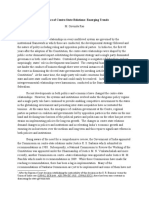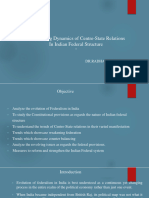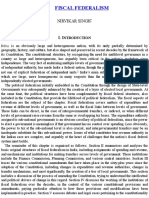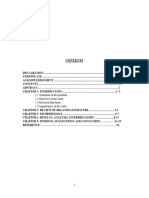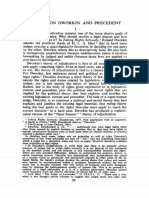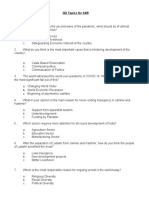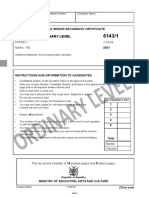0% found this document useful (0 votes)
23 views9 pagesDynamic Federalism
The document discusses the dynamism of Indian federalism over different phases from 1950 to present. It analyzes how Indian federalism has evolved from 'benign centralism' under Nehru to 'excessive centralism' during 1965-1989 to the current 'negotiatory federalism' after economic liberalization in 1991. Key factors driving changes include the shift from one-party dominance to coalition governments, judicial activism, and economic reforms prioritizing private investment and state autonomy over central planning.
Uploaded by
Atul TadviCopyright
© © All Rights Reserved
We take content rights seriously. If you suspect this is your content, claim it here.
Available Formats
Download as PDF, TXT or read online on Scribd
0% found this document useful (0 votes)
23 views9 pagesDynamic Federalism
The document discusses the dynamism of Indian federalism over different phases from 1950 to present. It analyzes how Indian federalism has evolved from 'benign centralism' under Nehru to 'excessive centralism' during 1965-1989 to the current 'negotiatory federalism' after economic liberalization in 1991. Key factors driving changes include the shift from one-party dominance to coalition governments, judicial activism, and economic reforms prioritizing private investment and state autonomy over central planning.
Uploaded by
Atul TadviCopyright
© © All Rights Reserved
We take content rights seriously. If you suspect this is your content, claim it here.
Available Formats
Download as PDF, TXT or read online on Scribd
/ 9












